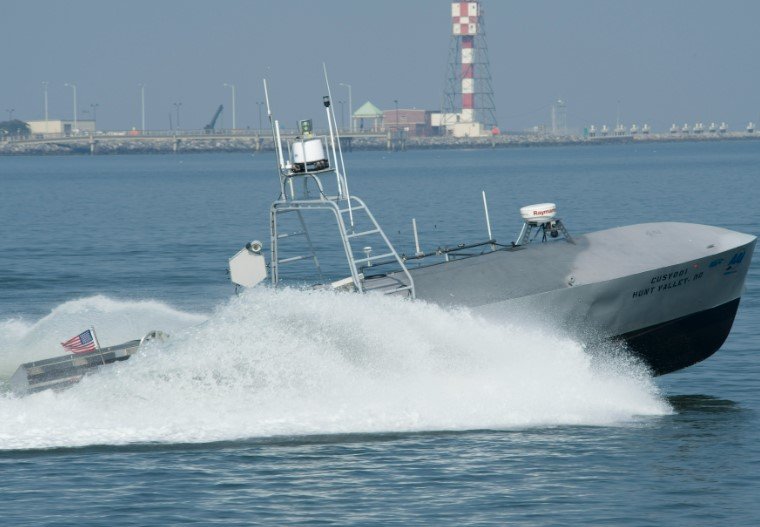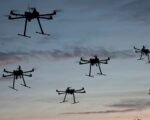In a major step forward for maritime tech, Hefring Marine unveiled its Intelligent Marine Assistance System on September 22, 2025, aimed at making unmanned surface vessels safer during high-speed runs. This system tackles key risks in remote operations, helping industries like defense and surveying cut accidents while boosting efficiency.
The Boom in Unmanned Surface Vessels
Unmanned surface vessels, or USVs, have grown from rare tools to key players in ocean work. These robotic boats handle tasks like mapping seabeds, watching wildlife, and supporting military missions without putting people at risk.
Experts say the global USV market could hit $2 billion by 2030, driven by needs for cheaper and safer options. Recent data from 2025 shows over 500 USVs in use worldwide, up 30 percent from last year. This surge comes as companies push for faster vessels to cover more ground quickly.
Defense forces lead the way, with the US Navy testing fleets for surveillance. Private firms use them for oil rig checks and climate studies. Yet this growth brings new hurdles that old safety rules do not cover well.

Key Risks in High-Speed USV Operations
Running USVs at top speeds creates dangers that remote controllers struggle to handle. Without being on board, operators miss out on real feel for waves and wind, relying only on screens and sensors.
A big issue is quick decisions in rough seas. Data shows reaction times drop by half at speeds over 30 knots. Communication delays add to the problem, sometimes lasting seconds in bad weather.
Here are some main risks:
- Speed mismatches with sea states, leading to flips or crashes.
- Limited view from cameras, missing small obstacles like debris.
- Human error in reading data under pressure.
These factors have caused more incidents lately. Safety reports from 2025 note a 25 percent rise in USV mishaps, mostly tied to speed.
One case involved a research vessel off Australia that hit unexpected swells at high speed, damaging equipment worth thousands. Such events show why new tech is vital to close these gaps.
How IMAS Solves Safety Problems
Hefring Marine’s Intelligent Marine Assistance System steps in as a smart helper for USV teams. It watches speed, weather, and surroundings in real time, giving tips to keep things safe without slowing missions.
The system uses sensors and AI to spot risks early. For example, it can slow a vessel automatically if waves get too big. Tests in 2025 showed it cut collision chances by 40 percent in simulations.
Operators get clear alerts on screens, making choices easier. This builds on tech from manned boats, now tweaked for remote use. It fits most USV models, from small survey bots to large defense units.
| Feature | Traditional USV Controls | IMAS Enhanced System |
|---|---|---|
| Speed Management | Manual adjustments only | Real-time auto recommendations |
| Risk Detection | Basic sensors | Advanced AI analysis |
| Reaction Time | Operator dependent | Instant alerts and adjustments |
| Data Logging | Limited records | Full event tracking for reviews |
This table highlights how IMAS improves over old methods. It not only prevents accidents but also logs data for better training.
Industry leaders praise it for filling a vital need. As USVs handle more complex jobs, tools like this ensure they stay reliable.
Recent Incidents Highlight Urgent Needs
A Navy USV accident on June 23, 2025, near California brought safety issues into sharp focus. During a tow test, the vessel sped up without warning and flipped a support boat. No one got hurt, but it led to a full safety review.
This event mirrors others worldwide. In Europe, a commercial USV crashed into a buoy at high speed last month, costing over $100,000 in repairs. Experts link these to gaps in remote awareness.
Such cases push for better rules. The International Maritime Organization plans new USV guidelines by 2026, focusing on speed limits and tech standards.
Hefring Marine points to these as proof their system is timely. By learning from real events, IMAS evolves to prevent repeats.
Partnerships Drive USV Future
Hefring Marine teams up with groups like Marine AI and Seabot Maritime to build stronger safety nets. These deals aim to set industry standards for training and tech.
Recent work includes joint tests in the North Sea, where IMAS helped USVs navigate storms safely. This collaboration speeds up adoption across sectors.
Looking ahead, experts predict USVs will make up 20 percent of maritime fleets by 2030. With systems like IMAS, that growth can happen without more accidents.
Regulators watch closely, with US Coast Guard trials set for late 2025. These steps ensure tech keeps pace with needs.
What This Means for Maritime Safety
IMAS could change how we think about ocean robots. It makes high-speed work safer, opening doors for more uses in rescue and research.
As climate change brings rougher seas, reliable USVs become even more important. This tech helps meet those challenges head-on.
Share your thoughts on USV safety in the comments below. If this article helped you understand the topic, pass it along to others in the field.








